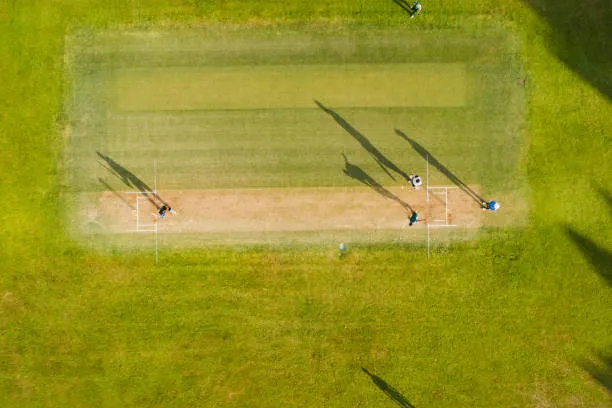
A new climate report titled “Hit for Six” has issued a powerful warning about the rising threat of extreme heat in cricket. Compiled by leading researchers and backed by the British Association for Sustainable Sport, the report details how surging temperatures are already disrupting matches across continents and urges cricket boards to urgently implement heat safety policies. From professional leagues like the IPL to grassroots matches in Australia and India, the risks to players, umpires, and fans are becoming impossible to ignore.
The study reveals that when ambient air temperatures cross 33 to 35°C, the human body relies solely on sweating to cool down. However, cricket gear—helmets, gloves, pads—severely restricts that process, turning routine matches into dangerous endurance tests. Players have reported heat-induced fatigue, confusion, cramping, and slower reflexes. Prolonged exposure to such conditions increases the risk of heatstroke, especially in multi-day games or when hydration is mismanaged.
Recent IPL seasons have been played in brutal April–May heat, with some venues recording temperatures over 44°C. Teams have adapted by batting first, using cooling vests and mist fans, but those measures remain insufficient in the face of such intense heat. Fielding teams particularly suffer, with captains admitting that drop rates and sluggish fielding have increased during peak hours.
One of the most alarming findings is the risk posed to junior and amateur cricketers. Young athletes have less efficient body temperature regulation, and at many grassroots venues, access to cold packs, shade, or professional medical care is limited or nonexistent. A tragic example occurred recently in Australia, where a local player collapsed and died during a match played in over 41°C heat, leading to public outcry and a reevaluation of safety norms in club cricket.
The “Hit for Six” report urges boards worldwide to act swiftly. Key recommendations include setting specific temperature thresholds beyond which matches must be paused or cancelled, mandating extended drinks breaks, shifting match timings to cooler parts of the day, and developing climate-adapted gear. It also emphasizes that match officials and organizers must share accountability for enforcing these protections.
Some boards have begun to respond. Cricket Australia, for instance, uses a formal heat stress index and applies strict junior-level safety rules. England and India have discussed shifting start times and updating protective equipment. However, most current policies remain advisory rather than mandatory, and there is no ICC-wide guideline for extreme heat.
Climate change has transformed the issue from seasonal inconvenience into a structural threat. Heatwaves are expected to grow longer and more frequent, especially in cricket-obsessed regions like South Asia and southern Africa. If proactive measures are not taken soon, the game may have to drastically adapt—whether by rescheduling summer tournaments or shifting formats to reduce exposure time.
For a sport built on tradition and rhythm, this climate challenge is uniquely destabilizing. But without decisive policy, cricket risks not just a dip in performance—but long-term damage to player safety and the game’s sustainability itself.

